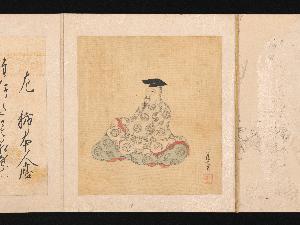Sumiyoshi Hirozumi
Sumiyoshi Hirozumi;Sumiyoshi Gukei
Place: Kyōto
Born: 1631
Death: 1705
Biography:
Early Life and Career
Sumiyoshi Hirozumi, a renowned Japanese painter, was born in 1631 in Kyoto, Japan. He is best known for his byōbu folding screens, such as Irises and Red and White Plum Blossoms, both registered National Treasures. Hirozumi's artistic journey began under the guidance of his father, Sumiyoshi Jōkei (1561-1633), and he later followed him to Edo to work as an official painter for the Tokugawa shogunate.
Founding the Sumiyoshi School
Hirozumi's most significant contribution to Japanese art is the founding of the Sumiyoshi school of Yamato-e painting. This school would go on to influence generations of artists, including Sakai Hōitsu (1761–1828), who not only replicated many of Hirozumi's paintings but also organized the first exhibition of Kōrin's paintings at the hundredth anniversary of his death.
Artistic Style and Legacy
Hirozumi's style is characterized by:
- Bright Colors: His use of vibrant colors, often in combination with gold leaf, created a visual impact that was both impressive and luxurious.
- Strong Outlines: Reflecting a renewed influence from Chinese painting, his style developed into a distinctly Japanese tradition.
- Innovative Techniques: Hirozumi's work on ceramics and lacquerware, produced in collaboration with his brother Kenzan (1663–1743), showcased his experimental approach to art.
Notable Works and Exhibitions
* Irises and Red and White Plum Blossoms (both registered National Treasures) * Featured in the Sumiyoshi Hirozumi's Gallery on Wikioo.org * Exhibited at the The Kanō School Style Art Movement, showcasing his influence on Japanese painting
Conclusion
Sumiyoshi Hirozumi's legacy as a pioneer of Japanese painting is undeniable. His innovative style, which blended Chinese influences with distinctly Japanese traditions, has left an indelible mark on the art world. As the founder of the Sumiyoshi school, his work continues to inspire artists and art enthusiasts alike, ensuring his place in the annals of art history. View more works by Sumiyoshi Hirozumi on Wikioo.org

